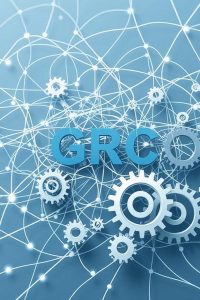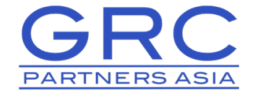Overview
Are you thinking about implementing a Governance Risk and Compliance (GRC) platform? Perhaps you’re enticed by promises of “automated compliance” or “simplified risk management”?
You need to know that there is no “easy button” for building and managing a GRC program.
Across the industry, there’s a clear demand for smarter, more efficient ways to streamline GRC management processes—driven by increasing complexity and pressure to stay audit-ready year-round.
What You Get:
This blog Covers:
- The (harsh) realities of using a GRC tool
- The illusion of automation as an “easy” button
- 6 must-know best practices for implementing and managing a GRC tool and program.
Introduction
Those who were looking to implement a GRC tool for the first time were skeptical about the promise of automation and were seeking validation of the big claims of program automation. Those who have already implemented GRC tools know the truth… No tool can simply automate GRC without having the right knowledge on automation!
GRC tools serve a purpose and can streamline GRC management processes. Just don’t expect them to be a ‘magic wand’ that makes your compliance/risk management/audit challenges resolved.
During a recent webinar, we explored an organization’s experience with implementing automation through a GRC platform. They had configured the platform, established automated evidence collection, and felt confident heading into their audit.
However, they soon realized that the evidence gathered automatically did not meet the standards or expectations of the auditor. This led to a familiar challenge—scrambling to manually gather acceptable documentation under tight deadlines as the audit approached.
“Unfortunately, this isn’t the first time we’ve heard this story, nor will it be the last.”
For those evaluating a GRC solution for the first time, this serves as an important cautionary tale. And for those who have encountered similar challenges, the frustration is all too familiar. The cybersecurity and regulatory landscape are in constant flux, making the task of managing security, compliance and risk management programs increasingly complex. Without the right alignment between technology, processes, and audit expectations, even well-designed initiatives can fall short.
There’s a common misconception that implementing a GRC tool instantly creates an “easy button” for compliance, risk management, and internal audit automation. It doesn’t. While automation plays a valuable role, true success depends on aligning technology with strategy, people, and evolving regulatory requirements. Without this alignment, even the most advanced tools can fall short—leaving organizations unprepared when it matters most.
In this blog, we’ll examine why GRC tools are not a silver bullet for all GRC challenges and share best practices for implementing a solution that truly supports a resilient and effective GRC program.
Beyond the Illusion of ‘Easy Button’: The Reality of GRC Automation

Why GRC Tools Are Enablers—Not Replacements—for Expertise
A GRC program is far more than a technology implementation—it’s a strategic initiative that integrates people, processes, and recurring activities, all working together toward a common objective: resilient and accountable business operations.
While technology plays a vital role, a GRC program cannot—and should not—be fully automated. These tools are not “set-and-forget” systems. Instead, think of GRC platforms as facilitators: they bring structure to security and compliance, audit and risk management efforts, offer real-time visibility, streamline documentation, enhance accountability, and support continuity over time.
However, even the most advanced GRC solutions require active engagement and oversight. Organizations must invest time, resources, and—most importantly—qualified personnel to interpret data, assess risks, and drive meaningful actions. Risk, Compliance and Audit are inherently nuanced domains; they demand human judgment, industry experience, and strategic thinking that no tool can replicate.
Ultimately, GRC technology is a powerful enabler—but success depends on the people behind it. Tools support the program. People run it.
The Hidden Complexity of GRC Programs—Regardless of Organization Size

GRC programs are inherently complex to drive. Whether driven by intricate organizational structures, diverse product lines, overlapping scopes, or the need to align with multiple regulatory frameworks, managing these programs is no small feat.
Interestingly, program complexity isn’t exclusive to large enterprises. In fact, smaller organizations—those with fewer than 1,000 employees—face many of the same challenges as global corporations with tens of thousands of staff. Regardless of size, the underlying issue remains the same: GRC initiatives require careful coordination, cross-functional alignment, and scalable systems to keep pace with risk, compliance, and governance demands.
The takeaway is clear: complexity in GRC is not about how big you are—it’s about how well you’re equipped to manage it.
Why GRC Implementation Fails—and How the Right Partner Can Prevent It
Implementing a GRC solution is often more complex than organizations anticipate. One organization we spoke with had high hopes of going live within three months. The vendor agreed the timeline was feasible. After the purchase, kickoff, and initial training, the organization was essentially left to navigate the rest on its own—relying solely on a support line for help.
In reality, the implementation stretched to over eight months. Organizational challenges, technical limitations, and constrained internal resources all played a role. This scenario is far from uncommon—and it highlights a critical truth: successful GRC implementation requires more than software; it requires a committed, and capable GRC implementation partner.
One of the most underestimated challenges in GRC implementation, especially in multi-framework environments, is “harmonization control”—the process of mapping controls across multiple regulatory or industry frameworks. It demands not only technical knowledge but also a deep understanding of control intent and audit expectations. Without that, mapping becomes inconsistent, time-consuming, and ineffective.
Many organizations either struggle through the process or avoid it entirely due to its complexity. And unfortunately, most GRC software vendors stop short of offering the support needed to overcome this hurdle.
This is where the difference between a vendor and a true GRC partner becomes clear. A partner brings hands-on guidance, domain expertise, and real-world insight to help navigate implementation and harmonization challenges—ultimately driving success and long-term value from your GRC investment.
Bottom line: Technology alone doesn’t solve compliance complexity. Expertise does.
Best Practices for Implementing a GRC Program and Tool

A successful GRC program doesn’t happen by accident. It’s the result of intentional leadership, strategic tooling, and continuous oversight. Below are six main pillars that organizations must prioritize to build a resilient and audit-ready GRC framework:
- Leadership and Governance
Effective governance begins at the top. Senior leadership must visibly commit to GRC efforts by allocating resources, setting clear expectations, and assigning defined roles and responsibilities. Beyond setting the tone, leadership must regularly “inspect what they expect”—evaluating program effectiveness and ensuring alignment with business objectives.
- Continuous Compliance Monitoring
Compliance isn’t a once-a-year event. It’s an ongoing discipline. A strong GRC platform should support real-time monitoring, automated alerts, evidence collection, and dynamic reporting. These capabilities reduce the pressure of audit crunch time and help evidence owners stay on track throughout the year.
- Integrated Risk Management
Risk management is the foundation of every GRC strategy. Organizations must continuously identify, assess, and prioritize risks to their operations, data, and reputation. A robust GRC tool should automate assessments, streamline risk scoring, and offer real-time dashboards to monitor the evolving risk landscape.
Involve AI in managing emerging risk , stay proactive in the business, read our blog on Horizon Scanning to know more about the benefits it offers .
- Continuous Improvement
GRC is not a one-time setup—it’s a continuous journey. As regulations evolve and threats shift, so too must your controls, policies, and processes. Your GRC solution should be agile, allowing you to adjust and enhance your program iteratively while staying compliant and resilient.
Always check GRC Product Roadmap for year and align your JIRA stories accordingly.
- Purpose-Built GRC Tooling
Avoid falling for the “easy button” myth. Effective GRC tools go beyond automation—they enable users to manage complex tasks like harmonization control, policy management, and continuous audit readiness. Choose a solution that’s built for depth, not just surface-level GRC.
- Vendor Support That Goes Beyond Software
The right vendor is more than a technology provider—they’re a strategic partner. Look for GRC vendors who offer hands-on support throughout implementation, provide expert guidance year-round, and proactively help navigate organization challenges, and changes in GRC requirements.
Final Thought:
An effective GRC program is not just about tools—it’s about leadership, agility, accountability, and the right partnership. By investing in these six pillars, organizations can drive long-term success, reduce risk exposure, and stay confidently audit-ready.
Final Thought: GRC Success Beyond Tools
While GRC platforms are powerful enablers, true success lies in how they are implemented, governed, and supported. The road to an effective compliance program is not paved with shortcuts—but with informed decisions, expert guidance, and strategic execution.
At GRC Partners Asia, we offer expertise, structure, and ongoing support to transform technology into real business value.






